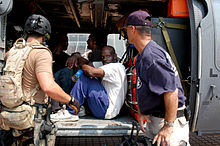This morning's national news, centers around Hurricane Harvey coming ashore in the Gulf and projected to make relative landfall on the coast from Corpus Christi to Houston, Texas. The hurricane is expected to be a category 3. It will be serious enough to cause major flooding and overwhelming destruction to property. There can reasonably, be expected even more horrific calamity in the form of loss of life, for those persons caught unprepared or who refuse to heed weather warnings. It would be wise to believe and take the appropriate protective measures proving secure in the knowledge, that Mother Nature has no sense of humor and is no comedienne. Her rightful claim to respect remains grounded in the knowledge that she does not lie and she does not joke.
I only wonder, if Hurricane Harvey will produce wild and calamitous destruction to the recreational coastline of Texas and how badly destructive it could be. I question if there will be enough money in FEMA's purse to reach out and provide emergency aid? What will Pres. Trump do and how will he respond? Will Trump even respond in a timely manner to a crisis like this? Will a natural disaster like this replace the useless "wall building project" of Pres. Trump and consume all available funds?
Can the affected American taxpayers on a possibly ravaged Texas coast, rely and depend on Pres. Trump to come to their rescue? We shall see.
"Good Day and Boner Appertite!"
(P.S. "Happy Birthday, Augie Doggie's Daddy!)
Excerpt From Wikipedia:
Budget[edit]
FEMA has an annual budget of $13 billion[2] that is used and distributed in different states according to the emergencies that occur in each one. An annual list of the use of these funds is disclosed at the end of the year on FEMA's website.[25][26][27][28]
Regions[edit]
Hurricane Katrina – 2005[edit]
FEMA received intense criticism for its response to the Hurricane Katrina disaster in August 2005. FEMA had pre-positioned response personnel in the Gulf Coast region. However, many could not render direct assistance and were only able to report on the dire situation along the Gulf Coast, especially from New Orleans. Within three days, a large contingent of National Guard and active duty troops were deployed to the region.
The enormous number of evacuees simply overwhelmed rescue personnel. The situation was compounded by flood waters in the city that hampered transportation and poor communication among the federal government, state, and local entities. FEMA was widely criticized for what is seen as a slow initial response to the disaster and an inability to effectively manage, care for, and move those who were trying to leave the city.
Then-FEMA Director Michael D. Brown was criticized personally for a slow response and an apparent disconnection with the situation. Michael Brown would eventually be relieved of command of the Katrina disaster and soon thereafter resigned.
Katrina was seen as the first major test of the nation's new disaster response plan under DHS. It is widely held[by whom?] that many things did not function as planned.
According to the U.S. House of Representatives Select Bipartisan Committee to Investigate the Preparation for and Response to Hurricane Katrina:[52]
- "The Secretary Department of Homeland Security should have designated the Principal Federal Official on Saturday, two days prior to landfall, from the roster of PFOs who had successfully completed the required training, unlike then FEMA Director Michael Brown. Considerable confusion was caused by the Secretary's PFO decisions."
- "DHS and FEMA lacked adequate trained and experienced staff for the Katrina response."
- "The readiness of FEMA's national emergency response teams was inadequate and reduced the effectiveness of the federal response."
- "Long-standing weaknesses and the magnitude of the disaster overwhelmed FEMA's ability to provide emergency shelter and temporary housing."
- "FEMA logistics and contracting systems did not support a targeted, massive, and sustained provision of commodities."
- "Before Katrina, FEMA suffered from a lack of sufficiently trained procurement professionals."
Other failings were also noted. The Committee devoted an entire section of the report to listing the actions of FEMA.[53] Their conclusion was:



No comments:
Post a Comment